new posts in all blogs
Viewing: Blog Posts Tagged with: 1968, Most Recent at Top [Help]
Results 1 - 9 of 9
How to use this Page
You are viewing the most recent posts tagged with the words: 1968 in the JacketFlap blog reader. What is a tag? Think of a tag as a keyword or category label. Tags can both help you find posts on JacketFlap.com as well as provide an easy way for you to "remember" and classify posts for later recall. Try adding a tag yourself by clicking "Add a tag" below a post's header. Scroll down through the list of Recent Posts in the left column and click on a post title that sounds interesting. You can view all posts from a specific blog by clicking the Blog name in the right column, or you can click a 'More Posts from this Blog' link in any individual post.
The House on the Strand. Daphne du Maurier. 1968. 352 pages. [Source: Bought]
First sentence: The first thing I noticed was the clarity of the air, and then the sharp green colour of the land. There was no softness anywhere. The distant hills did not blend into the sky but stood out like rocks, so close that I could almost touch them, their proximity giving me that shock of surprise and wonder which a child feels looking for the first time through a telescope.
Premise/plot: Richard Young, the hero of Daphne du Maurier's The House on the Strand, becomes a guinea pig for his scientist friend, Magnus, while vacationing in Cornwall. Magnus has concocted a hallucinogenic drug that allows the user to time travel, though not physically. While Dick's first 'time-travel' experience has its downsides, he enjoys it just enough to keep taking the drug in different locales. Why different locales? Because location matters. Your body may stay in the present, but, your consciousness is far, far away. And your body-and-mind act together. Your mind sees the world as it was. Your body experiences it as it is. Whatever you're doing in the past, you're doing in the present--sitting, standing, walking, running, etc. Readers DON'T see this, of course, just the results and consequences. You may sit down and take the drug in one place, and come back to reality hours later miles and miles away with no real idea of how you got there.
The past is the fourteenth century. The 1320s through the 1340s. Dick is an invisible presence in the past. He can "spy" on the past and follow people around, seeing and hearing plenty that interests him. He becomes very caught up in the lives of Isolda and Roger. (They are not a couple.) The past is full of soap opera like DRAMA.
The present is the 1960s. Dick is married to a woman, Vita, who has two sons. His wife and two stepsons join him on his vacation. He's not excited about that. Why? He really, really, really, really likes taking this mind-altering drug. And he fears that if he's surrounded by his family he might have to be responsible and stay in the present.
The drama isn't all in the past, a few things happen in the present that are just as exciting. Particularly when Magnus comes to visit his friend...
My thoughts: Dick isn't the smartest hero. Perhaps he trusts his friend a LITTLE too much. Or perhaps the sixties were so truly different that taking mind-altering drugs was something you did without blinking--without giving it a second thought. What am I doing to my mind? what am I doing to my body? Are there any side-effects? Are the side-effects longlasting? Is this a good idea?
The book chronicles Dick's adventures in past and present. And the world-building is strong in both. Characterization. I can't say that the characterization was super strong. This is more premise-driven than character-driven. But there's enough drama and mystery to keep you reading.
Science fiction doesn't come to mind when I think about Daphne du Maurier, but, I must say that you can definitely see her unique style in all of it. Especially the ending.
Did I like it? I didn't LOVE it, but, I definitely am glad I read it.
© 2016 Becky Laney of
Becky's Book Reviews
A Birthday for Frances. Russell Hoban. Illustrated by Lillian Hoban. 1968/1995. HarperCollins. 32 pages. [Source: Library]
First sentence: It was the day before Frances's little sister Gloria's birthday.
Premise/plot: It is Gloria's birthday. And Frances decides--a bit reluctantly--that she should buy something for her baby sister with her allowance. She decides on one Chompo bar (chocolate bar) and four gumballs. But it isn't easy for Frances to keep her mind made up. The more she thinks about it, the more she thinks that she should keep the Chompo bar for herself. The gumballs, well, they already met their fate. By accident, Frances claims. Will Gloria receive a Chompo bar for her birthday? Or will Frances be selfish and eat it herself?!
My thoughts: I just LOVE and ADORE A Birthday for Frances. It is so quotable.
Mother and Gloria were sitting at the kitchen table, making place cards for the party. Frances was in the broom closet singing: Happy Thursday to you, Happy Thursday to you, Happy Thursday, dear Alice, Happy Thursday to you. "Who is Alice?" asked Mother. "Alice is somebody that nobody can see," said Frances. "And that is why she does not have a birthday. So I am singing Happy Thursday to her." "Today it is Friday," said Mother. "It is Thursday for Alice," said Frances. "Alice will not have h-r-n-d, and she will not have g-k-l-s. But we are singing together." "What are h-r-n-d and g-k-l-s?" asked Mother. "Cake and candy. I thought you could spell," said Frances. "I am sure that Alice will have cake and candy on her birthday," said Mother. "But Alice does not have a birthday," said Frances. "Yes, she does," said Mother. "Even if nobody can see her, Alice has one birthday every year, and so do you. Your birthday is two months from now. Then you will be the birthday girl. But tomorrow is Gloria's birthday, and she will be the birthday girl." "That is how it is, Alice," said Frances. "Your birthday is always the one that is not now."
This book has the delightful Chompo Bar song in it:
Chompo Bars are nice to get.
Chompo Bars taste better yet
When they're someone else's.
I would definitely recommend this one. Do you have a favorite Frances book?
Text: 5 out of 5
Illustrations: 5 out of 5
Total: 10 out of 10
© 2016 Becky Laney of
Becky's Book Reviews
The Foot Book. Dr. Seuss. 1968. Random House. 36 pages. [Source: Library]
First sentence:
Left foot
Left foot
Right foot
Right
Feet in the morning
Feet at night
Left foot
Left foot
Left foot
Right
Premise/plot: Does The Foot Book have an actual plot? Probably not. It's a rhyming celebration of all sorts of feet, I suppose.
My thoughts: Probably not my favorite Seuss title. Not that I actively dislike it, mind you. It's just not going to make my top thirty.
Have you read The Foot Book? Did you like it? love it? hate it? I'd love to know what you thought of it!
If you'd like to join me in reading or rereading Dr. Seuss (chronologically) I'd love to have you join me! The next book I'll be reviewing is I Can Lick 30 Tigers Today and Other Stories.
© 2015 Becky Laney of
Becky's Book Reviews
Below Stairs: The Classic Kitchen Maid's Memoir That Inspired Upstairs, Downstairs and Downton Abbey. Margaret Powell. 1968/2012. St. Martin's Press. 224 pages. [Source: Library]
Below Stairs is one of two memoirs by Margaret Powell. As a young teen--fifteen, I believe--she entered service. (She left school to begin working to support her family a year or two earlier however.) Her first positions in service were as a kitchen maid. She later promoted herself to cook and sought out other positions with other families. The book tells of her experiences and shocks. One shock, for example, was when she found out she was to iron the shoe laces every morning in addition to polishing the shoes. It's a detailed look
at work. Work as a maid is anything but fun, glamorous, exciting. Dreary, repetitive, exhausting comes more to mind. This memoir does not focus on any particular wealthy family; it is not a dramatic romance like Downton Abbey.
I enjoyed reading Below Stairs. I found it to be a quick read. I liked that Powell enjoyed reading and tried her best to read what she could, when she could, even though there wasn't always a lot of free time. She worked very long hours, had very little time to herself, and was at times discouraged from seeking out books and wanting 'more'.
© 2013 Becky Laney of
Becky's Book Reviews

By:
Becky Laney,
on 11/12/2012
Blog:
Becky's Book Reviews
(
Login to Add to MyJacketFlap)
JacketFlap tags:
science fiction,
adult fiction,
short stories,
1968,
1969,
Adult Science Fiction,
book I bought,
1972,
Books reviewed in 2012,
Add a tag
The Star Trek Reader. Twenty-one Novelized Episodes Based on the Exciting Television Series Created by Gene Roddenberry. James Blish. 1968, 1969, 1972. Dutton. 372 pages.
This is the first volume in the book series of adaptations by James Blish. It contains three books, "Star Trek 2," "Star Trek 3," and "Star Trek 8." It was a great introduction to Blish's work. It features stories like, "The Trouble with Tribbles," "The City on the Edge of Forever," "Friday's Child," "Tomorrow is Yesterday," etc.
What surprised me is that I found myself liking the short story adaptations even when I didn't particularly remember liking the episode it was based on. (Though Spock's Brain didn't exactly improve.)
For anyone who loves the characters, the stories, the friendships, the themes of Star Trek The Original Series, this is a MUST. I enjoyed it very much. There is definitely something comforting and satisfying about it. I definitely want to reread it!
Read The Star Trek Reader
- If you enjoy vintage science fiction
- If you enjoy Star Trek The Original Series
- If you enjoy short stories
© 2012 Becky Laney of
Becky's Book Reviews
.jpg?picon=107)
By:
Lizzy Burns,
on 3/26/2010
Blog:
A Chair, A Fireplace and A Tea Cozy
(
Login to Add to MyJacketFlap)
JacketFlap tags:
reviews,
horror,
middle grade,
tweens,
elementary school,
ghosts,
stepfamilies,
Brilliance Audio,
1968,
2009,
mary downing hahn,
clarion books,
ellen grafton,
Add a tag

Wait Till Helen Comes: A Ghost Story by Mary Downing Hahn. Clarion Books 1986. Sandpiper Paperback Reissue 2008. Brilliance Audio 2009. Narrated by Ellen Grafton.
by Mary Downing Hahn. Clarion Books 1986. Sandpiper Paperback Reissue 2008. Brilliance Audio 2009. Narrated by Ellen Grafton.
The Plot: Molly, younger brother Michael, and stepsister Heather, a newly blended family, have moved to a house in the country. Heather has never been the most likable child, and she gets even worse now that she has a friend. Helen. A ghost child only Heather can see. Heather's father, Dave, thinks his daughter is imaginative and doesn't understand Molly's concern.
Molly finds out that a nearby home burnt down over a hundred years ago, killing a young girl named Helen. Several children have drowned in a nearby pond. Molly becomes convinced that Heather is in danger. Can she save her stepsister?
The Good: Wait Till Helen Comes is a scary as hell ghost story about not one, but two, mean little girls. Is there anything more terrifying than an evil child? How about an evil child that everyone else thinks is young and nice and harmless?
Heather, seven, is a brat even before Helen enters the picture. She manipulates all those around her and is particularly gifted at getting her father to take sides against his new stepchildren, Molly and Michael, and against his new wife. Helen is not just the ghost egging Heather on; Helen is also a ghost responsible for the drowning deaths of several children over the years.
But that's not the scary part. Oh, it is scary, and kids looking to be scared will love this book. Creepy, atmospheric, spooky, with a very real danger.
That's not what scared me as an adult. As an adult reader, I was appalled at how the stepfather, Dave, treats his stepchildren, his wife, and his own daughter. No physical abuse; but enough nastiness and neglect that I couldn't help but wonder at what type of rebellions Molly, Michael and Heather would have in high school. Molly, given the model that to have a man, you put up with his garbage, is Most Likely To Be In Abusive Relationship. Scientist Michael stops escaping to woods and bugs and starts escaping with drugs. And Heather, looking for the love she doesn't get from Daddy, will be Sixteen and Pregnant.
Let me give some examples. Dave, talking to his ten year old stepson, Michael, says "what kind of little monster are you anyway." And the mother, hearing her child called a monster, does . . . Nothing. Instead, mom tells her children to be nicer. Basically, setting the stage of future dysfunction by modeling the "if you don't piss him off, he won't get mad, just be good so he will stay with us" relationship, rather than the "he's being irrational and over the top in his anger, and I won't put up with me and my kids being treated that way" relationship.
Frankly, it's upsetting. And honestly? Dave isn't that much better with Heather. He flips flops between spoiling her and ignoring her. No wonder Heather is obnoxious -- her father repeatedly rewards her worst behaviour and totally plays into a very uncomfortable wife versus child struggle.
And -- here is the best part
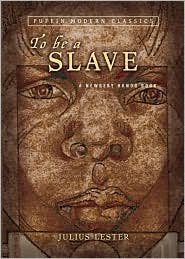
Lester, Julius. 1968. To Be A Slave.
This book is a 1969 Newbery Honor Winner. And it's easy to see why. What should you expect from this one? Why should you read it? Well, Lester has woven together compiling primary sources into a book that is powerful and moving. The thing that impresses me most about the book is its richness. It presents first-hand accounts, primary sources. Accounts from both the nineteenth and twentieth centuries. Stories from slaves and ex-slaves. Stories from men and women. These stories don't need a lot of dressing up. They don't need to be sensationalized. In their very simplicity, they speak volumes.
To be a slave. To be owned by another person, as a car, house, or table is owned. To live as a piece of property that could be sold--a child sold from its mother, a wife from her husband. To be considered not human, but a "thing" that plowed the fields, cut the wood, cooked the food, nursed another's child; a "thing" whose sole function was determined by the one who owned you.
To be a slave. To know, despite the suffering and deprivation, that you were human, more human than he who said you were not human. To know joy, laughter, sorrow, and tears and yet to be considered only the equal of a table.
To be a slave was to be a human being under conditions in which humanity was denied. They were not slaves. They were people. Their condition was slavery.
They who were held as slaves looked upon themselves and the servitude in which they found themselves with the eyes and minds of human beings, conscious of everything that happened to them, conscious of all that went on around them. Yet slaves are often pictured as little more than dumb, brute animals, whose sole attributes were found in working, singing, and dancing. They were like children and slavery was actually a benefit to them--this was the view of those who were not slaves. Those who were slaves tell a different story.
Highly recommended.
© Becky Laney of
Becky's Book Reviews
In this edition of La Bloga:
Words To Stir The Soul
Adiós, La Mano Press
Remembering 1968
A Dozen On Denver
WORDS TO STIR THE SOUL
Earlier this week I had the pleasure of participating in Words To Stir The Soul, an annual event (for twelve years now) sponsored by the Center of the American West. This is quite a literary happening. The idea is to bring together a diverse group of people (professors, writers, artists, community leaders, etc.) to read from their favorite literature, usually around a common theme. Each reader gets five minutes only (and a very short amount of time for an introduction and to provide some context), but the reading selections are up to the individual readers. Words To Stir The Soul has always been a multi-hued, multi-layered celebration of literature.
Here's the introduction from the printed program:

Words To Stir The Soul spotlights some of the region's best writing by providing a unique opportunity for both readers and attendees to deepen their appreciation of the region in which we live. In this process, the Center of the American West strives to create dialogue and establish non-partisan relationships that can lift us above the rhetoric that frequently governs public dialogue about the complex issues we face as westerners. When we conceived this event, we did so with the faith that the better angels of our nature would prevail. We hope you enjoy tonight's reading.
This year's event focused on immigration and the intent was to present works that discussed the topic in a creative, artistic fashion, and not necessarily as part of a political debate or polemic.
Patty Limerick, the Faculty Director of the Center, is an enthusiastic host for this event; she's enthusiastic about everything she does and if you ever get a chance to see her you should jump at the opportunity. Read one of her thought-provoking opinion pieces in periodicals such as the Rocky Mountain News, New York Times and the Wall Street Journal. She introduced this year's program and the readers by reminding the audience that immigration issues, questions, and concerns are not new topics in the West and that many Western writers have tackled the subject.
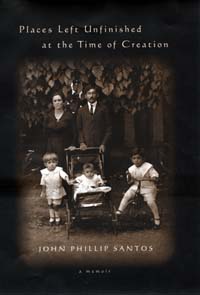
I chose for my reading the first few pages of John Phillip Santos' incredible memoir, Places Left Unfinished at the Time of Creation (Viking, 1999). This book was a finalist for the National Book Award and in 2006 was the One Book, One City selection for San Antonio. I chose it because it faithfully, and beautifully, conveys the duality of the Mexican-American experience - roots in this country that go deep, for hundreds of years, and yet often we are newcomers, fresh from the border, in our own heads and in the eyes of our fellow residents of this contradictory, confusing country.

I'll list here some of the other readers (a complete list is here - heavy on professors this year) and their selections, many of which should be familiar to La Bloga readers:
Steve Burkholder, former Mayor of Lakewood, Colorado, read from Luis Alberto Urrea's The Devil's Highway (Back Bay Books, 2005), one of La Bloga's all-time favorites;
Daryl Maeda, Professor in the Department of Ethnic Studies at the University of Colorado, Boulder, chose No-No Boy by John Okada (University of Washington Press, 1978); this reading made me want to read Okada's classic; it's now on my list;
José Mercado, Asst. Professor in the Department of Theater, Film & Video Production, University of Colorado, Denver, read Federico Peña's speech, We Are America, originally presented by the former Mayor of Denver at the massive Cinco de Mayo immigration rally in Denver in 2006;
John-Michael Rivera, Assoc. Professor in the Department of English, University of Colorado, Boulder, and Director of El Laboratorio, read from The People of Paper, Salvador Plascencia (Harvest Books, 2006); remember the controversy we discussed here about this book and its author?

MaryAnn Villarreal, Asst. Professor in the Department of History, University of Colorado, Boulder, presented selections from Crossing by Manuel Luis Martínez (Bilingual Review Press, 1998); another book added to my list because of this event; a photo of Villarreal from the event is to the right.
William Wei, Professor in the Department of History, University of Colorado, Boulder, read from America is in the Heart: A Personal History by Carlos Bulosan (University of Washington Press, 1974); this book should be on every one's list.

The nature of the event does not leave time for discussion after the readings, but that is certainly something that could be added. I have been thinking that I might try to put together my own version of Words to Stir the Soul. I would invite Latino/a writers, artists, musicians, teachers, entrepreneurs, etc., to read from their favorite book by a Latino/a writer - no set theme. Talk about encouraging literacy. Hook-up with a school, get the students to attend, and it could well be a night to remember, and a night with lasting impact. Don't you think we'd hear everything from Bless Me, Ultima to The Undead Kama Sutra, with a bit of Juan Felipe Herrera and the Hernandez Bros in-between? Now that's literature.
Muchisimas gracias to the Center of the American West for the invitation to participate.

ADIÓS, LA MANO PRESS
I pass on this message:
"After five great years at La Mano Press we have decided to say goodbye to LA. For me it has been about 14 years of learning experiences, accomplishments, many good moments and many great friends. We, Silvia, myself and all the friends who
have collaborated with us, have done all our best to try to promote the arts in our communities. I hope we have at least left some mark along our way. We can no longer afford the expense of having La Mano Press open while we live and work in Mexico. I am already working on a nice project down there: EL HUERTO, a center for ecology and arts, a botanical garden with an adobe building
dedicated to the arts. To see it: http://www.lamanopress.com/huerto.html
"This Saturday November 15, join us for the GRAFICOMOVIL party, a traveling mural, mobile cinema, gallery and print studio.
http://www.lamanopress.com/grafico.htm
"After two years of a lot of hard work, Oscar Duardo and myself, have transformed the old and rusty 1947 delivery truck into this great piece of art. Now we want to take it to the streets and hopefully travel across country with it. In this
event we will be asking for your cooperation, to make this a reality. Almost forgot, we have designed and produced 2 new skate decks. In this event you will also get a chance to see them, as they are hot off the press.
"Our last event will be our Christmas sale on Dec. 5,6,7. As usual many artists
will be here to share their wonderful work. I hope to see you here so we can toast together for La Mano Press's past history and the hope of a great future for all of us. Invite friends.
"Saludos,
Artemio Rodriguez"
La Mano Press - 1749 N. Main Street, Los Angeles, CA 90031
REMEMBERING 1968
From forty years later, the events of 1968 appear as fantastic images caught in a strobe light, pulsing to the beat of countryfied rock music. Unreal, sometimes unbelievable, the people and passions of 1968 shine directly on what we have experienced in the very political year of 2008.
I've been thinking a lot about 1968. I recently wrote about that year in a novel I'm working on, and only a few weeks ago I watched the excellent animated documentary Chicago 10, which details the notorious trial of the men accused of inciting riots at the 1968 Democratic National Convention. I remember the big events of that year, of course - all around the world, revolution was on the agenda, revolution was in the air, as the poet said. From Mexico City to Paris, from Czechoslovakia to Northern Ireland. South Africa to Vietnam. Here in this country, student takeovers of university buildings ; the San Francisco State College student strike. Riots in the cities, antiwar marches and civil rights demonstrations. The hippie counter-culture, psychedelic music and drugs, free love and free form jazz. Chávez fasted for the farm workers. Chicano teachers and students in Los Angeles walked out of the classrooms for eight days. The assassinations: Martin Luther King, Jr. and Robert Kennedy. The murders of progressive leaders, Black Panthers, Chicano activists, and many others. A year of conflict and climax; the year I grew up.
And I remember the not-so big events.
I worked in construction that summer, with my father, trying to earn enough to stay in school and save for a student life style that I hoped would be more than cheese and crackers, condensed soup and cheap wine. My Dad worked me to death but that made it easy for me to understand why I had to stay in school. I would come home totally exhausted, not able to do more than collapse on the living room floor and watch the news. I saw the city of Chicago hunt its own children, I heard the politicians call for the blood of the peace-mongers, and I knew which side I had to be on. It's been forty years since a group of very young Chicano students came back to the Colorado State University campus radicalized and "incited" by events that happened that summer, including the brutal attacks on the antiwar protesters in Grant Park, the same site where Barack Obama would acknowledge his election as President of the U.S. In 1968 that group of very young students created one of the first Chicano student organizations in the state - the Mexican American Committee for Equality (MACE). They made demands on the CSU administration for more students and teachers of color; for more relevant classes and degrees; for less of a university involvement in the U.S. war machine. MACE eventually formed a coalition with the Black Student Alliance; they protested, marched, disrupted, and worried through candlelight vigils. They were gassed, arrested, threatened with expulsion and violent injury. They lived what we now trivialize with the throw-away tag of "the Sixties."
Bottom line - MACE and the BSA created a recruitment, scholarship and mentoring program at CSU that has changed over the years, but it still functions and has provided assistance for thousands of students.
You got stuff from 1968?
A DOZEN ON DENVER
This November, the city of Denver celebrates its 150th anniversary. In April, the Rocky Mountain News follows with its own 150th. To commemorate both, the News is running a special series titled A Dozen on Denver: Stories to Celebrate the City at 150. For the series, the News commissioned 11 Colorado authors to write original fiction. The authors were asked to choose a different decade of Denver's history, to mention Larimer Street at least once in their stories and to keep it all to 2,500 words.
The News has featured a new story each Tuesday since the beginning of the series. Coming Friday (November 14 - today), look for a special section in print compiling all the stories, plus one additional piece: the winner of the News' story contest.
Also Friday, stop by the Denver Newspaper Agency lobby at 5 p.m. to meet some of the featured authors and help kick off the Rocky's 150th anniversary. The public is invited to mix and mingle with many of the 12 Dozen on Denver authors, plus enjoy a beverage and light appetizers from 5 to 7 pm.
The party will be in the Denver Newspaper Agency lobby, 101 W. Colfax Ave., in downtown Denver. Rocky Publisher John Temple, Denver author Sandra Dallas and Rocky Books Editor Patti Thorn will share comments about the series and attendees are welcome to bring items for authors to autograph.
I'll see you there.
Later.
I met Jim Rigney, who wrote under the name of Robert Jordan, at my friend Mike Ford's memorial service. (Mike died last September, when I was in London.) Jim was Mike's adopted family -- Mike would go and stay with Jim and his wife at holidays. Jim was in a wheelchair at the memorial, fragile but happy (as happy as one could be, as I said at the time) to be there. We met and spoke and liked each other, bonding on a lost friend, and we've stayed in touch in email ever since.
I liked him.
I just learned he died yesterday.
And, slightly stunned, I found myself thinking, stupidly, "I shall have to stop coming to the UK in September if this is what happens whenever I do." As if, if I stayed home, I could keep everyone alive.




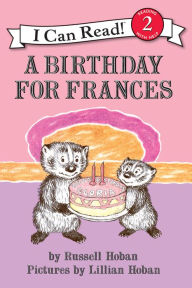
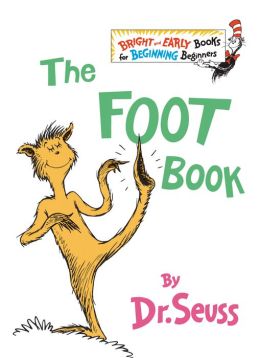
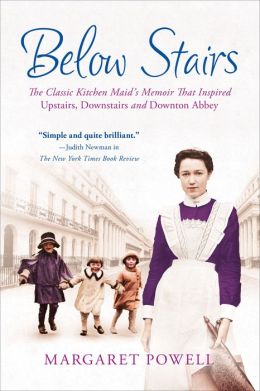









So glad you read and enjoyed this one! I didn't enjoy it when I read it, but I'd be tempted to try
to read it again at some point.
I have only read one memoir before and it was pretty good. Don't know about reading the mundane daily routines of a maid. Oh my I don't think I could "humble" myself for such service. I pray I never need to find out! :)